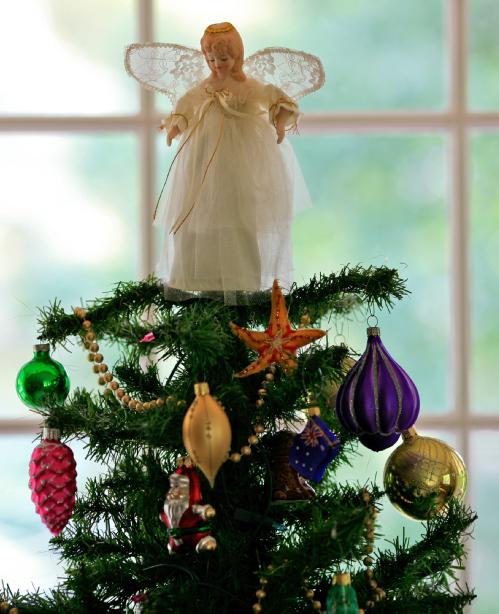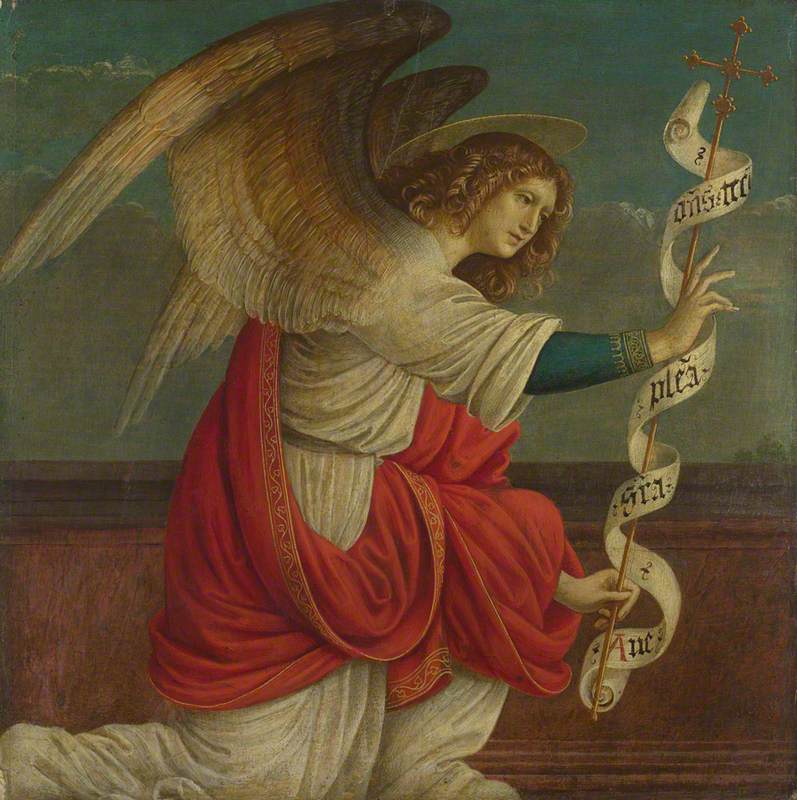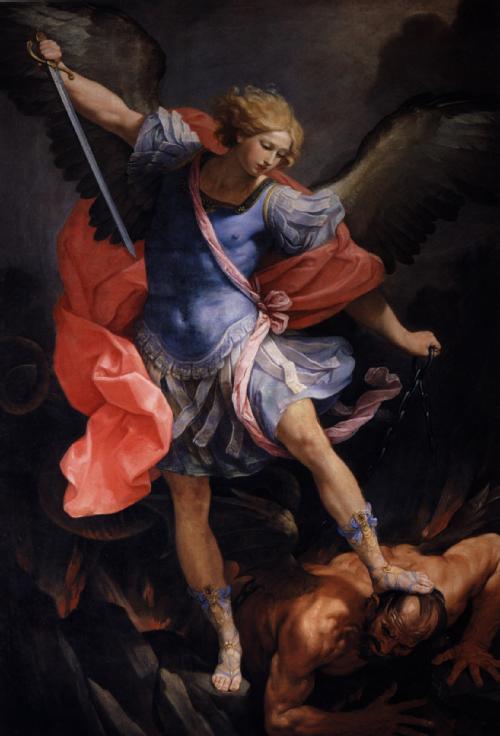Punishers and Protectors: Angels in Seventeenth-Century England
In contemporary culture, angels are typically one-dimensional characters, reclining on gravestones or shining down from atop Christmas trees with auras of peaceful benevolence. But a few centuries ago, angels were multifaceted. They were embodiments of goodness and purity, protectors of humankind and guardians of the soul after death. But they were also potential punishers, who might enact God’s judgements on sinful mortals. This showcase explores the various roles ascribed to angels in four sources stemming from seventeenth-century England. Taken collectively, the sources reveal the rich variety of functions that angels performed in the early modern mind.
The first sourceLink opens in a new window is A Treatise of Angels (1613), by the clergyman John Salkeld (1580-1660). This text reflects how the topic of angels divided theological opinion. Catholicism traditionally afforded angels an important role as humans’ guardians. Following the Reformation, Protestants sought to scale back angels’ role in the cosmos, underlining that angels were significant only as instruments of God, and Christians should not pray to them directly. Many Protestant theologians also argued that angels no longer appeared on earth; their visitations had been confined to the biblical era. Salkeld, a recent Protestant convert, sought to reconcile aspects of the Catholic and Protestant positions on angels, carving out a new place for angels within post-Reformation society.
The next two sources are accounts of angelic appearances produced in cheap formats, and pitched at a popular audience. The second sourceLink opens in a new window is an anonymous chapbook, published in London in 1659, entitled The Good Angel of Stamford. It tells of how a shoemaker called Samuel Wallas was cured of ‘a deep consumption’ after following advice apparently conveyed by an angel. This document offers another perspective on how angels remained important in post-Reformation English culture, showing how popular stories could be appropriated and utilised by local ministers.
The third sourceLink opens in a new window is a broadside ballad published in London in 1663: Strange News from Westmoreland. It relates the story of a man called Gabriel Harding who murdered his innocent wife, only to be denounced by an avenging angel who summoned the Devil to break his neck. The anonymous author uses the murder to remind ‘good Christians’ of the omnipresence of angels and their power to intervene and punish where necessary. Illustrated and set to a tune, the text offers a vision of angels that would have been accessible across the social spectrum.
Finally, the fourth sourceLink opens in a new window is an image from Joseph Glanvill’s posthumously published Saducismus Triumphatus (1681). This book occupies a middle-ground between Salkeld’s heavily theological work, pitched at an educated readership, and the cheap pamphlet literature targeted at broader audiences. Glanvill (1636-80) was an Oxford-educated philosopher who aimed to convince sceptics of the reality of an invisible world of spirits. The widely influential Saducismus Triumphatus collated accounts of witchcraft and apparitions, and included richly illustrated frontispieces - this image features on the frontispiece to the second part of the book. It depicts an angel attending a person’s sickbed, potentially waiting to escort the soul to Heaven.
The history of angels is a history of theological and philosophical rifts, conflicts and compromises between ministers and their parishioners, and tension between different angelic archetypes. It is also a history of how people consistently found comfort or utility in stories of angels, even if these angels often differed from their saccharine modern-day descendants.
Source analysis authors:
Georgia Cirillo, student in History
Tamyla Jawahir, student in History
Jenna Meakin, student in French and History
Hana Noor-Khan, student in History
Anna Sharp, student in History
Collated by Dr Martha McGill, British Academy Postdoctoral Fellow in History

Angel on top of a Christmas tree by Alex Proimos (2011), CC BY 2.0

The angel Gabriel by Gaudenzio Ferrari (c. 1506)

The archangel Michael defeating Satan by Guido Reni (c. 1630)
